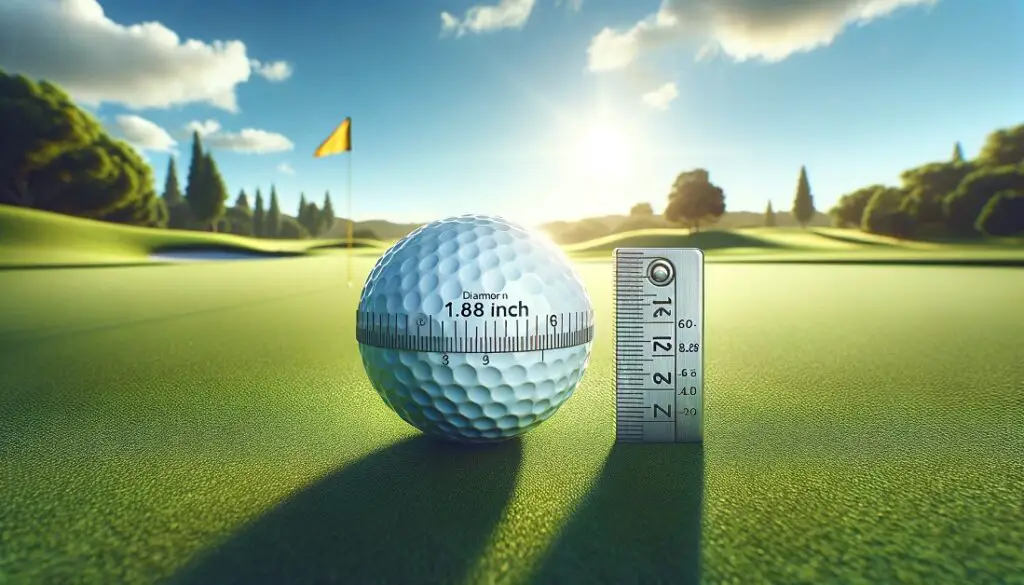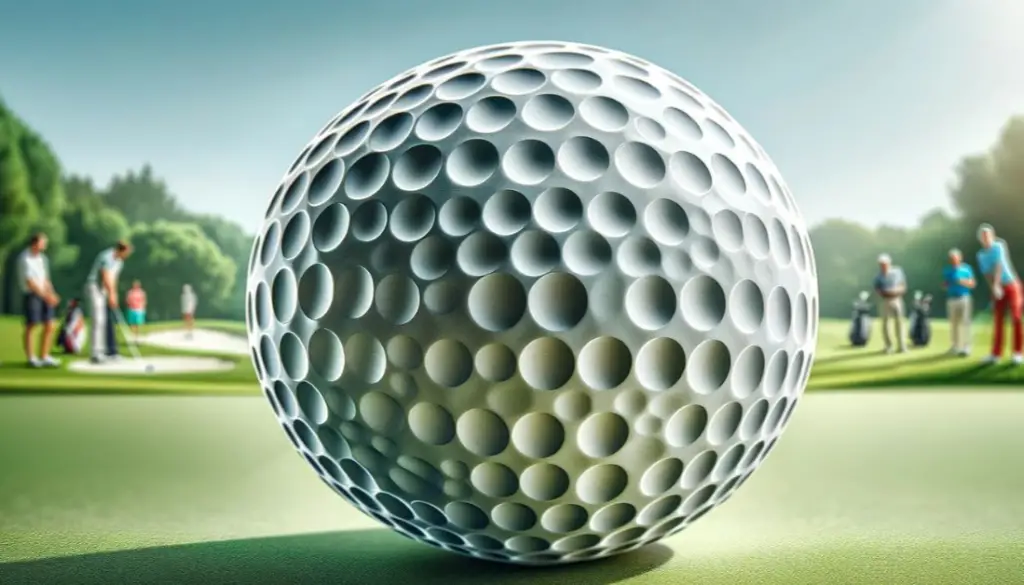When I first started golf, I quickly learned that a good grip is one of the most important things to get right. A strong, well-formed grip is the foundation that determines the success of your swing, helping you hit straighter shots and gain control over the clubface. Many amateur golfers face the common struggle of squaring up their clubface at impact, often leading to those dreaded hooks and slices that can destroy your confidence on the course and ruin a scorecard.
By focusing on the fundamentals of a proper grip, you can play with fewer errors and build a more consistent swing, setting yourself up to master the game. This golf grip guide blog post is all about how to hold the club like a seasoned athlete, even if you’re just starting out or returning to the sport. The purpose of a proper grip is simple yet crucial. It’s the link between you and the club, the pivotal connection that allows beginners and experienced players alike to control each shot fully.
There are several types of grips and ways to grip the club—whether you’re gripping wedges, irons, fairway woods, or a driver—and finding the right grip style can transform your game. The best players in history show us that there’s no single “perfect” way; Tiger Woods, for instance, has his own unique grip. I suggest starting with a simple, step-by-step process to build a solid grip and then refining it over time as you learn more. For anyone serious about golf, nailing this fundamental part of the game can help you play with confidence and enjoy real progress.
Table of Contents
ToggleImportance Of Proper Golf Grip
The importance of a proper golf grip can’t be overstated. Among the many topics I’ve seen written in golf instruction, grip stands out because it’s the only link between golfers and the club. Many golfers, especially when learning for the first time, don’t realize how much power, accuracy, and consistency depend on this small detail.
The ball only reacts to how fast the club moves, its direction, and the position of the clubface at impact—all of which are controlled by your grip. Adjusting your grip might feel uncomfortable and even like a step backward at first, but it’s a change well worth the effort. Over time, it will feel like second nature, helping you develop a more consistent, solid game with lasting results for years to come
Types of Golf Grips
In golf, the way we place our hands and fingers on the club can make a big difference in our swing and shot accuracy. There are different types of grips to consider, and each style offers a unique advantage. Each position is determined by the placement of your hand on the club. This can have a direct impact on your takeaway, wrist hinge, swing plane, and overall shape of your shot. Whether you’re trying a new method or sticking with what feels natural, learning to mesh your hands and fingers properly is key to developing a solid and effective grip.
Weak Grip

A weak grip is when the left hand is aligned to the left, with the glove logo pointing at the target. This makes the crease between the left thumb and pointer finger face upward, often towards the shirt logo. It’s a grip style that many golfers in history, including the likes of Ben Hogan, Jon Rahm, Collin Morikawa, and Jordan Spieth, have used. While it’s effective for some, I often advise against it for beginners, as it can lead to inconsistent ball striking and more mistakes on the course.
At impact, players with a weak left-hand grip often need to bow or flex their lead wrist to strike the ball properly, which might work for some, depending on their anatomy and self-discovery. While a weak grip is a common position for many amateur golfers, there are better choices than this one. It tends to result in a loss of distance and makes it much easier to hit a slice, which can lead to trouble on the tee, in bad spots like trees, or in fairway bunkers. Despite being a popular choice, it’s not always recommended because it limits shot control and often puts golfers in tough situations.
Strong Grip
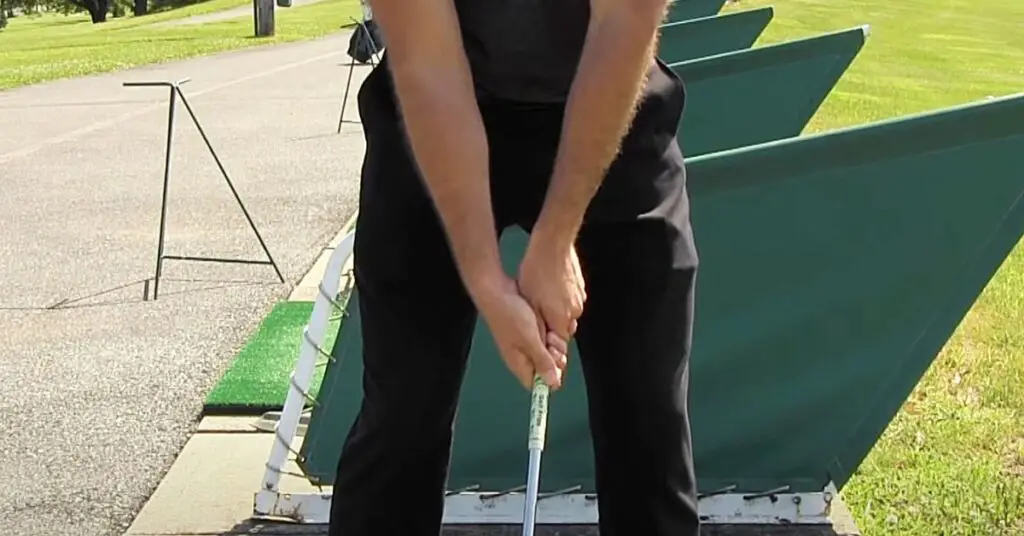
A strong golf grip isn’t about tightly holding the club; it’s about golfers placing both hands more to the right side if they’re right-handed. This grip usually shows three or four knuckles on the left hand at the address position, with the thumb resting on the right side of the club. Many golfers find this grip feels natural and strong, making it easier to compress the ball. However, a strong grip can cause the clubface to close at impact, which may invite a draw or hook shot instead of a straight one.
For golfers with a strong left-hand grip, this position works well for longer, lower-ball flights and powerful shots that tend to keep running after landing. However, those who use this grip may struggle with precision on lob shots, fades, and bunker shots unless they practice consistently. While changing to a more neutral or weak grip might seem like a big change, it’s worth the effort for those who want a more versatile shot range over the long run.
Neutral Grip

A neutral golf grip is often seen as the perfect balance between power and accuracy. It is the grip that many instructors recommend, as it requires no extra manipulation of your body or hands, making it the standard for most golf swings. The idea behind this grip is that it allows the fingers to naturally mesh together, providing stability without forcing your hands into awkward positions.
When you set up for a neutral grip, the creases between the thumbs and pointer fingers—known as the V’s—should point towards your right eye. The glove logo should also be facing slightly toward the target, helping to maintain the classic positioning of your hands. This grip has been used by famous players like Tiger Woods and Adam Scott, making it a reliable choice for those looking for a perfect swing.
Ten Finger Grip
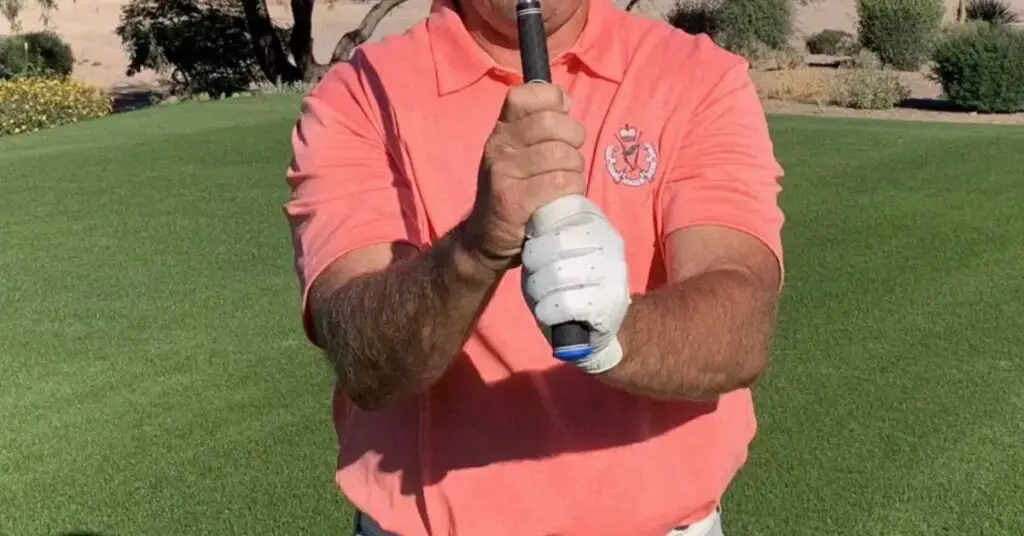
The 10-finger grip is often used by beginner golfers and involves the hands meeting at the right pinky finger and the left pointer finger, with the left thumb resting under the palm of the right hand. While elite amateur golfers and professional golfers don’t typically use this grip, it’s a great method for those just starting out, as it offers a more natural connection between the hands. It’s similar to a baseball grip, with the key difference being the left thumb, which helps create a better connection between both hands. When using the 10-finger grip, the hands should rest softly together, avoiding any unnecessary pressing.
Interlocking Grip
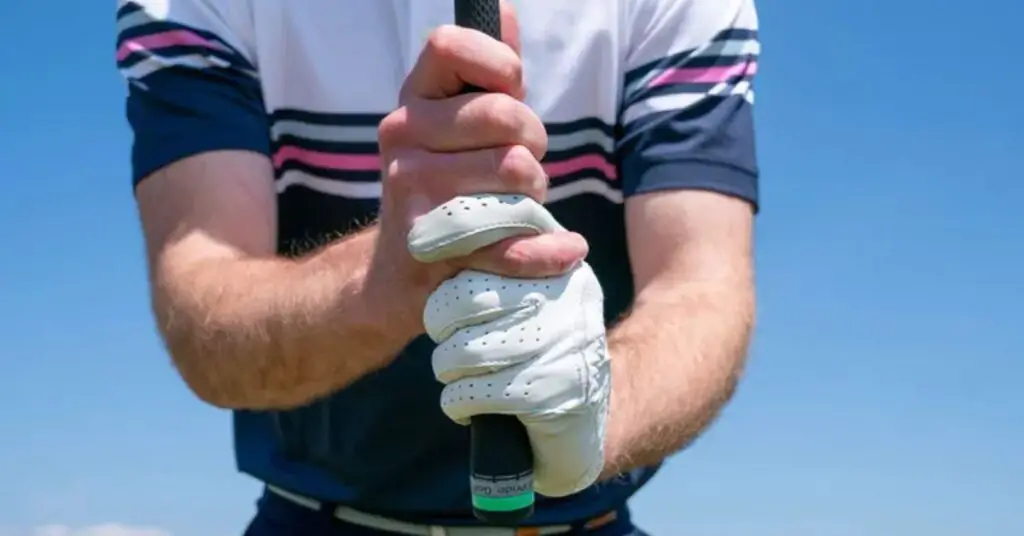
The interlocking grip is a popular method for holding the golf club, where the right-hand pinky finger crosses between the left-hand pointer and middle finger. This creates an interlock, allowing the hands to connect and mesh together. It’s used by famous golfers like Jack Nicklaus and Tiger Woods. The key to this grip is that while the fingers lock, they should be resting softly, with the webbing between the fingers not pressed too tightly. Applying too much force can lead to blisters and reduce swing speed due to higher tension levels. There’s a common misconception that this grip is mostly for ladies or juniors, but that’s far from the case—it’s effective for all golfers.
Also Explore: Interlocking vs Overlapping Grip: Pick the Right Golf Grip
Overlapping Golf Grip (Vardon Grip)
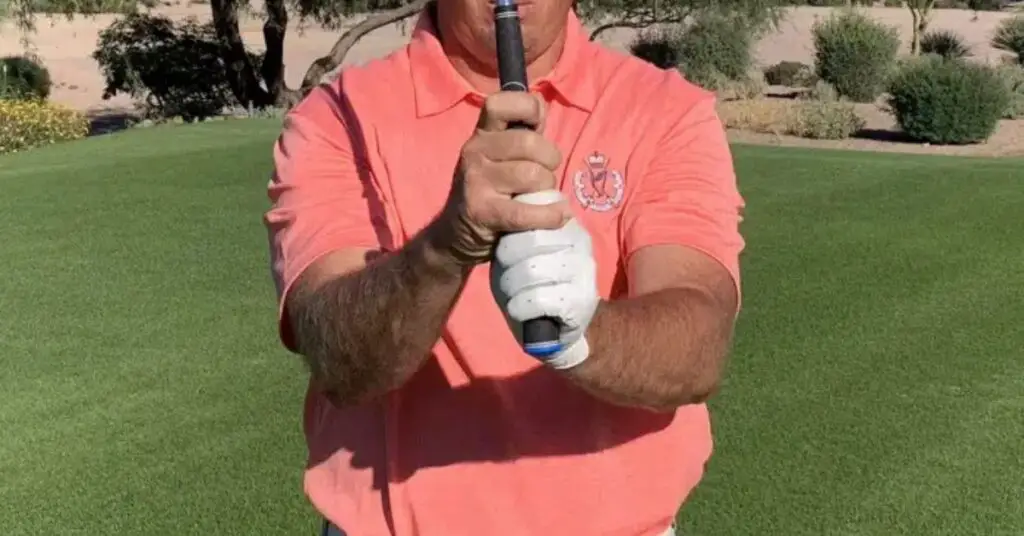
The overlapping grip, also known as the Vardon grip, is an excellent choice for holding the golf club. In this grip, the right-hand pinky finger rests gently on top of the notch between the left pointer finger and middle finger, rather than interlocking with the left hand. It’s important to ensure the pinky is not forcibly wedged into this position but rather resting softly. This grip was famously used by Harry Vardon, a six-time Open Champion, and remains a popular method for many players.
Step-by-Step Golf Grip Guide To Gripping The Club Like An Athlete
Here’s a step-by-step guide to gripping the golf club like an athlete. A proper grip is essential for control, consistency, and power in your swing, and these steps will help you achieve a solid grip that supports your athletic stance.
The Left Hand

When gripping the golf club with your left hand, start by holding it with your fingers and leaving your hand open. The grip should run from the middle joint of your index finger all the way to the fleshy pad at the bottom of your hand. Then, roll your thumb into position, ensuring the forefinger and thumb create a ‘V’ that points toward your right ear.
The knuckles of your left hand should be visible, typically around 2½ knuckles, which is the neutral position. This is a key part of your pre-shot routine, where you check that your left hand is in the correct position. Now, take note of how your arms and wrists align when you’re in your posture. Your arms should hang naturally, with the back of the left glove hand pointing slightly away from you, not directly at the target.
The club should rest in the fingers of your left hand, with the grip running from the middle of the index finger to the base of the little finger. Keep the club about half an inch from the end to help you maintain better control and improve your ball striking ability. If you can see more than 2½ knuckles, your grip may be in too strong a position, and if you see less, it’s in too weak a position.
The Right Hand

When placing your right hand on the golf club, make sure the fingers are wrapped around the underside of the grip. The palm of your right hand should cover the left thumb, with the thumb and forefinger creating a line that points toward your right ear. This positioning helps generate power in your golf swing. To ensure a firm hold, your right index finger should rest in the middle joint of the finger, forming the trigger position, similar to pulling a gun trigger. After securing the grip, the “V” shape formed between your right thumb and index finger should point toward your chin. If it points over the right shoulder, your grip is too strong; if it points over the left shoulder, it’s too weak.
This helps you achieve proper ball position and better strikes. To maintain a solid grip, use the guideline where the middle fingers of both hands meet. Wrap your fingers around the grip, keeping the right hand secure. The fleshy part of your right thumb should rest on top of the left thumb, giving you a comfortable yet firm hold. This setup will provide better control, allowing you to hit the ball with precision.
The Overlap Grip
To start mastering your golf grip, let’s explore the popular overlap technique, also known as the Vardon grip, named after Harry Vardon. This approach is widely recommended by PGA Tour pros and is generally assumed to be one of the most effective ways to unify both hands and create a consistent and repeatable swing. To begin, place your right hand so that its little finger fits snugly in the gap between the index and middle finger of your left hand.
By sliding both hands together this way, they’ll unite and complement each other, working as a unit with the club. This technique naturally reduces excess movement, helping you develop better rhythm and control. For 98% of players, especially those with different-sized fingers, the overlap grip is an easy way to master a controlled and effective swing, creating a connection that feels almost second nature.
Also Explore: Master The Double Overlap Golf Grip And Boost Your Game
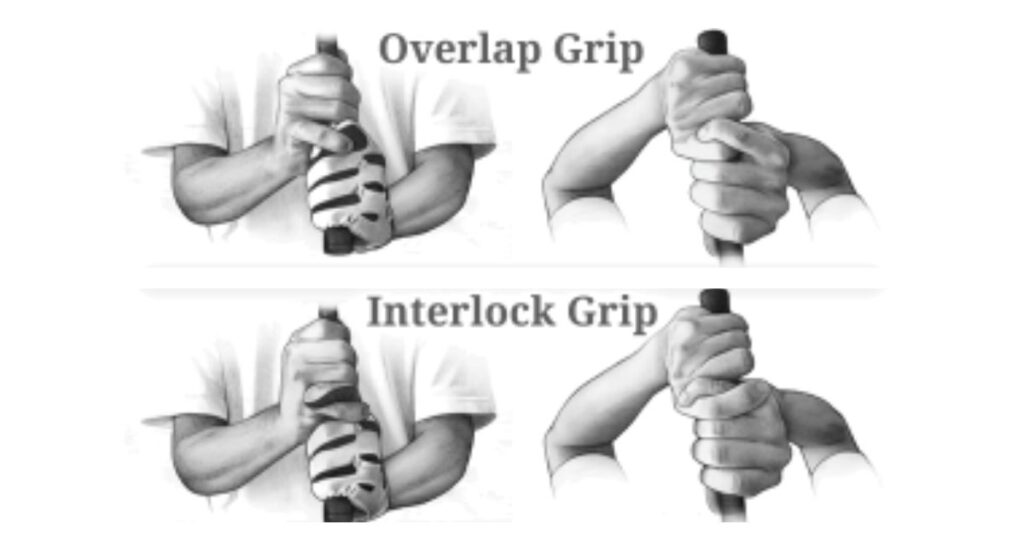
Interlock Grip
To create a secure hold with the interlock grip, start by positioning your left hand on the golf club with your index finger just off the golf grip. Now, place your right hand on the club so that both your hands connect. Instead of resting your right little finger in the gap above the left index finger, interlock your fingers by crossing them together.
This technique, used by some of the greatest golfers like Tiger Woods and Jack Nicklaus, gives a strong, unified hold that can be particularly helpful if your hand size feels comfortable with this grip. While only a small percentage of golfers prefer it, the interlocking grip is worth trying for that extra sense of feel and unity with the club.
Common Golf Grip Faults
Mastering the fundamentals of a solid golf grip can solve many issues golfers struggle with on the course. One of the biggest challenges involves having either a weak or strong grip, which can significantly affect your club face position at impact. A strong grip, where the lead hand sits more on top of the club, commonly leads to hooks because the face wants to close through the swing. An easy way to check if this applies to you is to look at how many knuckles are visible on your lead hand.
If you see three or more, it’s considered a strong grip, and spending time trying to weaken it can help you regain control. On the other hand, a weak grip is often linked to the dreaded slice, where the clubface is open to the swing path at impact. This can plague your game if left unchecked, so take a moment to examine how many knuckles are visible—if less than two, it may be a good idea to strengthen your grip slightly.
Beyond grip strength, tension is another factor that many golfers overlook. Finding the right pressure lets you swing with freedom and speed without squeezing the club too hard. Aim for a lighter hold that keeps the club stable but avoids excessive force. This neutral position is the final piece of the puzzle that can lead to a noticeable improvement in your game.
Conclusion
Golf grip guide, I hope you’ve enjoyed learning about the different ways to hold a golf club and develop a proper grip. Taking time on your grip is time well spent, as I’ve seen firsthand through my privilege of coaching thousands of golfers. Generally, successful golfers spend time mastering the fundamentals—setup, body alignment, and grip. If you decide to change your grip, give it time to feel normal and avoid going back to what feels too comfortable, so you can keep progressing toward a perfect grip.
When gripping the club, focus on aligning your hands and wrists correctly. Following the step-by-step guide above will position your fingers on the shaft in a way that makes your hold stronger and more dynamic, reducing injury risk. A weaker grip, particularly in the left hand, often requires more bow or flexion of the lead wrist to achieve a solid impact.
In our daily lives, this isn’t a natural motion, so training to keep the club face square and reduce face roll in the swing can bring great results. The right range of motion and wrist hinge can lead to a better impact, more shaft leanness, and a desirable ball flight. In practice, even the best players in the world stay focused on their foundation, regularly checking their grip to avoid inconsistent contact, slices, hooks, and other issues.
FAQ's
What is the Proper Golf Grip Pressure?
Golf grip pressure can vary greatly depending on the type of shot. For example, with a driver, which is the longest club in your bag, you’re often swinging at the highest speeds, so grip pressure may need to increase compared to a softer shot like a chip with a wedge around the green. I like to see firm tension primarily in the fingers, which are the main connection points with the club.
Meanwhile, wrists, forearms, upper arms, and shoulders should stay relaxed for a full range of motion. If I were to put it on a scale from 1 to 10, your grip pressure would ideally range from 4 to 8, depending on the shot and club at hand. Gripping the club too tightly can build tension in the body, which hinders your ability to make a good swing.
But at impact, a firmer hold—around a 9 or even 10 on the grip pressure scale—can give you better control over the strike. To get a sense of this, address the ball with a 4 on the scale but consciously grasp tighter as you hit the ball. This small change can make a big impact on your ball striking and is important for any type of swing. The key is balance: avoid holding so loosely the club could slip, but don’t squeeze it to death!
What is the best golf grip for a beginner?
When you’re just starting in golf, the baseball grip can feel the most comfortable and natural. With this grip, all ten fingers are on the club, much like how you would hold a baseball bat. Many beginner golfers find it to be the easiest to learn, as it doesn’t require as much precision as other grips and feels familiar from the very first swing. It’s a great starting point for those who are new to the game!
What is the best golf grip for distance?
If you’re aiming to hit the ball farther and with a straighter ball flight, the full-finger grip is a great choice. This grip helps create more control over the club, allowing you to generate the power needed for longer, more accurate shots.

With several years of experience in golf, Golf Golz are dedicated to helping golfers elevate their game through innovative training techniques, premium equipment, and expert insights. From mastering your swing to conquering the course, we bring you strategies and tools designed by world-class instructors to help you play your best golf yet.


